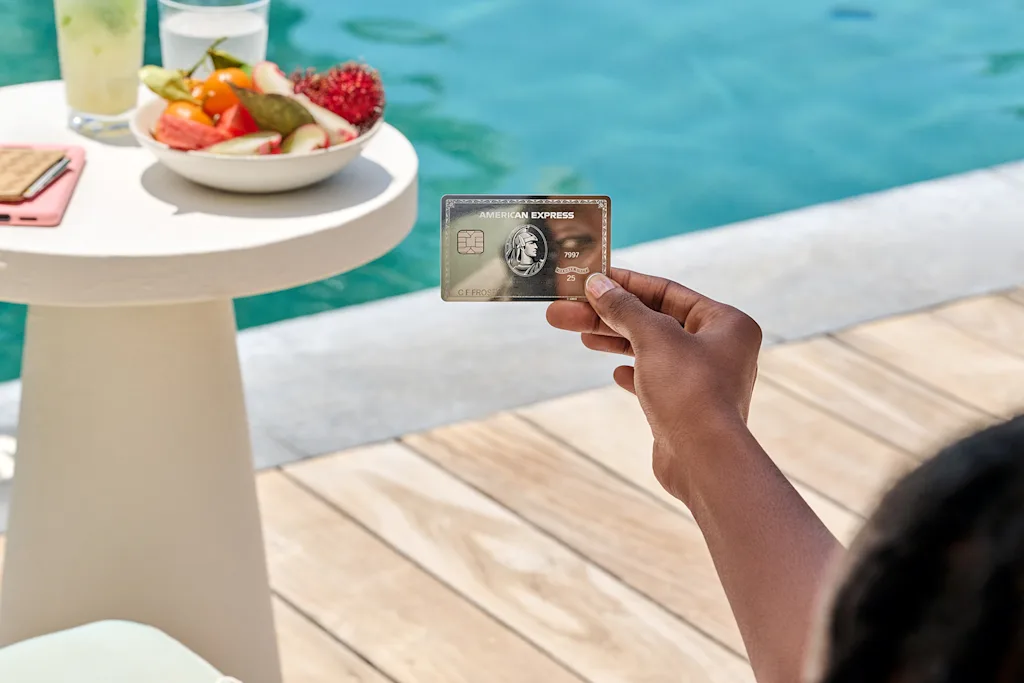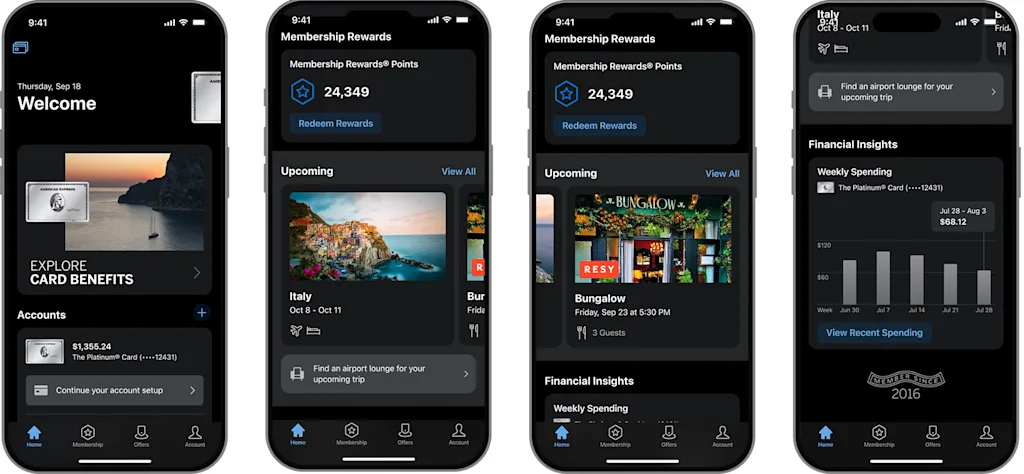
We’ve seen black cards. Gold cards. Platinum cards. Pink cards.
Now, Amex is debuting the first credit card that’s a mirror.
The new, limited edition Platinum Mirror Card is a piece of metal polished to a reflective finish. In an increasingly digital world, it’s an industrial design object intended to redefine what a premium credit card means—but owning it also unlocks an exclusive (and ever-so modernist) UX in Amex’s own app.
In 2024, Amex hit record revenues of $65.9 billion, which is projected to grow by 8-10% in 2025. That’s no small feat for a legacy payments company. Much of its success is due to the positioning of its Platinum Card. The card comes with a hefty $695/year fee. But despite the price, it boasts 98% year to year retention—and 75% of the people signing up are Millennials and Gen Zers. It’s part of a greater premium credit card race, and a bid for Amex to distinguish itself in a competitive business—against JPMorgan in particular.
Amex is courting younger customers by positioning itself, not simply as a credit card to buy stuff, but as an all-access pass for experiences, ranging from cutting the line to buy concert tickets to hanging in dozens of exclusive airport lounges it runs worldwide.
The company is building these perks through partnerships, but also key acquisitions: Amex bought the digital reservations company Resy in 2019 to get its customers into restaurants more easily. The strategy matches what airlines, amusement parks, and others are doing more and more: Charging a bit more to offer those with an expandable income a VIP version of everyday life.
Designing the Amex Platinum card

While a reflective slab of metal is a simple enough idea, it’s still somewhat enchanting to behold, as far as credit cards go. Its core concept also reinforces the brand ethos. According to Reanna Gross, VP and head of American Express’s internal creative agency OnBrand, it’s built to be a “portal to experiences.” It reflects things you’re, and even your own face while having them. When I call it the “selfie card,” Gross offers a polite laugh. (I’m only half kidding: what better way to woo generations that grew up on Instagram, Snapchat, and TikTok?)
Designed in-house, the project required several months of development and testing. The team landed on UV lasers to etch customer names and numbers on the card, while printing elements like the brand’s centurion logo in ink. It experimented with several finishes to protect the surface to resist smudges and scratches, and then, the team attacked it mercilessly with keys.
“We actually had prototypes and tried to, like, really, really break them and use them and smudge them, and then iterated from there,” says Gross.
Translating the card to the app

From the earliest stages of development, the Amex team knew that the card had to be more than a card, and Gross worked closely with Evan English, VP of Product Design and Research at American Express, dropping into her office for long whiteboard sessions on how this unified strategy could work.
Members will see that in the newly designed Amex app, which for Platinum users, will shift from Amex’s beloved blue to white during the day, or a more stoic black with gunmetal highlights at night. Truthfully, it’s a pretty typical Dark Mode approach to UX. But as English explains, it intentionally creates a vibe that the user “ladders up to Platinum,” a sort of graphical implication of a business class experience.
The app has also been redesigned to deprioritize spending information lower on the screen. Instead, the user is greeted with a graphic of their Platinum card, and a large lifestyle-centric photo that teases all of the experiential benefits (dining, travel, etc). Amex wants its users to explore the benefits they can sign up for, caroseling through various registrations, to communicate the services it’s providing front and center. But if you scroll down, you’ll still get to that typical transaction data you’d expect, along with information about someone’s upcoming reservations.
“We’re on a rolling path forward to start bringing a lot more content into this screen that really reflects that membership value,” says English.
Branding the VIP experience

As a final step, Amex is translating the entire reflective idea to its own brand marketing. Teasers have been running for weeks, capturing bits and pieces of the card with an almost iridescent intensity. Soon ads will run across social that captures the card set at a beautiful cafe table, reflecting the flowers of al fresco dining. Another add shows two mirror cards toasting like wine glasses, with a metallic “clink.”
All-in-all, nothing Amex has executed across these designs is out of reach for most big companies. It’s just a highly coordinated system, drawing a clear brand narrative across physical product, to UX, to advertising. It’s certainly filigree, but it’s also a most certain vibe, reimagining a forgettable piece of plastic as a path to posh adventure.
And for Amex, positioning its value is important. Rumor has it that Amex’s Platinum subscription is set to increase significantly, again, in the coming year or two. With a cost that’s more in line with a cellphone plan than a credit card, Amex needs to keep convincing you that it’s worth it to spend a little more. There’s just one potential flaw. If credit card debt keeps rising and the middle class tires of feeling left out, all of these VIP experiences and fancy cards may feel less like a perk—and more like a social liability.





